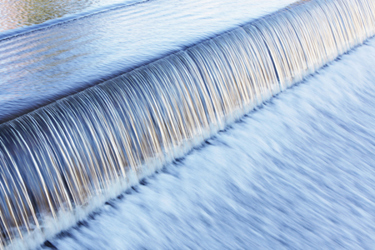2025 Water Forecast: Transition, Changes, And Trends

By Kevin Westerling,
@KevinOnWater

Hmmm … what’s new for 2025? That's asked with a hint of knowing sarcasm, as the incoming presidential administration promises to disrupt the status quo. The change in direction for environmental policy, including impacts on regulations as well as traditional and human infrastructure, has yet to fully reveal itself.
What won’t change, however, is the U.S. water industry’s collective commitment to solving water issues — for the benefit of the environment, consumers, and the industry itself. The professionals behind the scenes who clean and supply our water are the ultimate authorities on the sector’s needs and challenges, so their voice should be heeded.
In December, five notable water groups — the American Water Works Association (AWWA), the Association of Metropolitan Water Agencies (AMWA), the National Association of Clean Water Agencies (NACWA), the Water Environment Federation (WEF), and the WateReuse Association — wrote to President Elect Donald Trump calling on his administration to “advance policies that strengthen the nation by recognizing water as a national priority.”
The top-line request in the letter was continued financial investment in renewing America’s infrastructure, which has been a concern for decades, via State Revolving Funds (SRFs) and other financial assistance programs. Next mentioned were newer concerns, which can also be seen as trends or focus points for water and wastewater professionals in 2025: support of the “polluter pays” principle for PFAS cleanup, regulations based on sound science and fair policies, and action to promote water reuse.
From Policy To Technology, Forging Ahead
While these water organizations and industry ambassadors appeal for policy progress, we must also seek technological progress. That’s the mission of Water Online’s annual “Top 10 Trends” edition of Water Innovations. Themes from above are represented — infrastructure, PFAS, and water reuse — with affordability and regulatory concerns layered into almost every article. Other 2025 trends we cover include advances in GIS for utility management, water quality monitoring methods, desalination, decentralized treatment, smart water programs, and more.
Q&A: An Expert’s Analysis
Obvious within the water industry, or most any sector, is that everything is trending toward digital, automated, remote, and “smart” — at its smartest, leveraging machine learning and artificial intelligence.

Meena gave her tech take on the following five questions…
What are the current trends in real-time water analytics and intelligence?
- Focus still largely remains on water usage analytics, more so than water quality, so the need for a breadth of realtime water quality analytics still exists as a challenge. It’s encouraging to see some startups in Europe, Africa, and Australia pursuing their quest for bacterial/pathogen detection, which is a difficult feat.
- Satellite image-based water quality monitoring is picking up steam, but without the onsite sensing systems in place to provide the sensitivity and accuracy needed for decisionmaking, it has a way to go.
- As a goal to increase the caliber of the water quality data available, artificial intelligence (AI) is increasingly being used by companies to predict water demand, detect leaks, and forecast water quality, but the clarity of its use and impact have yet to be uncovered.
- There is a need for automated and comprehensive remote monitoring for water reuse systems to provide early detection of any potential health threats. Meanwhile, several commitments to net-zero-water by 2030 are becoming daunting for some private organizations that aren’t equipped with the tools or resources for the ambitious, brand-oriented goals they have laid out.
- Aligning to a PFAS strategy as a water institution, whether you are a public or private organization, also has to be a top priority for 2025.
What is the role of detection in addressing per- and polyfluoroalkyl substances (PFAS)?
To better understand the problem, the U.S. EPA has initiated nationwide monitoring for 29 PFAS at 10,000+ public water systems, and that aligns with KETOS’ motto: “You can’t act on what you don’t measure.”
In addition to real-time measurement, we offer a data-as-a-service (DaaS) platform that sources, cleans, and aggregates publicly available data — from trusted organizations such as the EPA, the United States Geological Survey (USGS), and the National Oceanic and Atmospheric Administration (NOAA) — to generate actionable insights on PFAS risk and options in just minutes. It’s a start to some much-needed answers.
While municipalities ultimately hold the line for water security and availability, industrial operations are closely tied to the mission. How is industry embracing sustainability and resiliency, and to what effect?
Private and public alignment from a compliance standpoint is what closely intertwines municipalities and industry, as effluent flows from both wastewater treatment plants and industrial operations.
There is no enforcement for climate resilience, but there are key indicators of commitment, such as the appointment — and power assigned to — a chief sustainability officer (CSO). Do they have budget authority? Can they make decisions that force operations to change the status quo? Can they set standards across an organization? Or is the naming of a CSO more a “nice to have” branding announcement?
As someone who wants institutions globally to make water a top priority and take serious action toward gaining intelligence around it for proactive decision-making, it is important to assess how strong organizations are in their sustainability commitments.
What are the water implications brought on by the rise in AI, both good and bad?
While 2024 is widely recognized as the year AI gained significant traction, 2025 will likely witness a rapid expansion of AI-powered technologies, fueled by the growth of new data centers. Much of the focus has been on the electricity and computational power required to support AI-driven data centers, but more attention needs to be given to the downstream impact of water consumption and the subsequent wastewater discharge.
What are some technological advances that could be game-changers for water and wastewater management?
- Bacterial and pathogen detection in a matter of minutes — compared to days of waiting — without compromising accuracy, could be massive for utilities.
- Using AI for sewage monitoring, in addition to sensing capabilities where opioid concentrations can be understood. This could be science’s way of tackling the growing fentanyl epidemic.
- The removal of pharmaceutical residues that tend to remain in treated wastewater and advancing toward deeper detection abilities for such parameters.
- Automated PFAS detection at EPA compliance levels still remains a large question to be addressed commercially.
Thanks to Meena Sankaran and to you, the reader, for journeying with us into another exciting year of Water Innovations.
